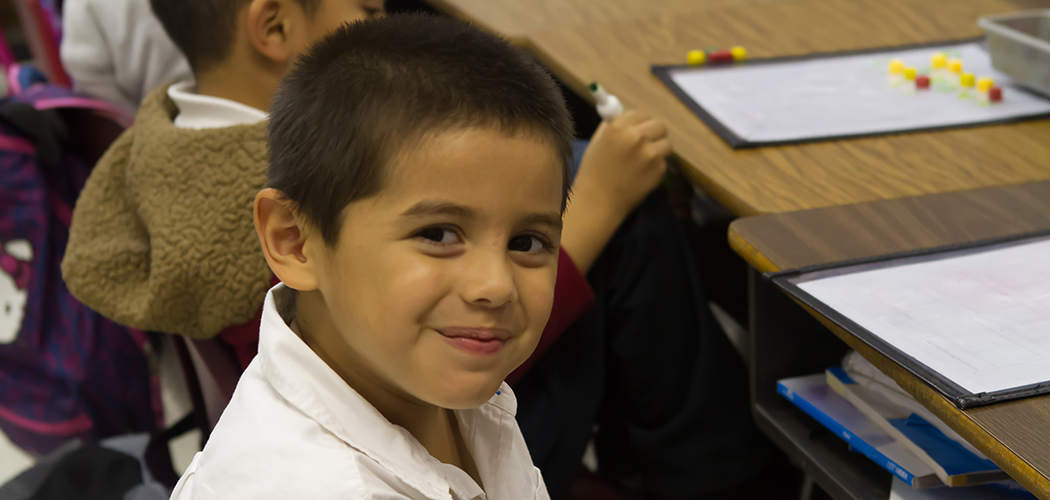A ‘one size fits one’ approach
This year at Dan D. Rogers Elementary School on Abrams and Lovers, students will be given the freedom to learn at their own pace.
Rogers is one of Dallas ISD’s six new “choice schools,” converting its traditional elementary to a “personalized learning” campus. What that looks like, says principal Lisa Lovato, is a classroom full of children hard at work but not on the same thing at the same time.
“It allows kids to be comfortable in their learning and not feel bad about where they are,” Lovato says. “Since we have 16 languages and, I would say, very distinct tiers as far as where the kids are, we’re going to be able to better meet their needs.”
Each classroom will have various stations — a teacher might be working with a handful of students at one station while another four or five students work on iPads or laptops at a technology station. In another spot, students can partner up on projects or work independently. Teachers monitor each student’s progress and tailor projects to their instructional needs.
Rogers piloted the approach last year and saw “a lot more independence in students and more accountability in their learning as well,” Lovato says. “Once they’re invested, we see them being more driven in wanting to succeed.”
It’s a “one size fits one,” approach, says Ashley Bryan, Dallas ISD’s director of special projects. Lovato’s team at Rogers was one of 36 chosen by the district in its initial call for choice school applications, which eventually winnowed down to six schools. As part of its selection, Rogers is receiving its share of the $2.6 million Gates Foundation grants, doled out to the Dallas ISD campuses on top of their general budgets.
The money allows the school to purchase 10 student devices per classroom, in addition to roughly five stationary computers. It also supports a project-based learning coach and a personalized learning coordinator to help as new programs get off the ground.
Eventually, Lovato says, Rogers wants to move into mixed-age groupings based on students’ progress. The school has roughly 125 transfer students from refugee-populated Vickery Meadow, so standards and learning are all over the map, quite literally, depending on the countries from which students hail. Personalized learning allows Rogers to catch up these students while simultaneously challenging its talented and gifted students.
Though Rogers is popular with transfer families, Lovato notes that Rogers isn’t well-attended by children in its own neighborhood, but “I’m getting a lot more interest from the neighborhood than I have in a while,” she says.
Within the next five years, Dallas ISD hopes to create at least 35 choice schools, and many of them will be like Rogers — neighborhood schools that change their educational approach. The schools will primarily serve their attendance areas and also welcome transfers as they have room, which is good, Lovato says, “so that not everybody feels like they have to transfer to a magnet school.”






